I bloody love Iceland
It’s full of rocks and puffins and volcanoes and ponies and geysers and more volcanoes and stuff. And it’s a geologist’s wet dream, although I don’t count sedimentologists as real geologists so you lot can stop nodding in agreement.
What right-minded nose comber can resist active volcanoes and recent lava flows still warm under foot? The Fagradalsfjall volcano, which has been erupting for a while now, haunts my erotic dreams at night – orange, fiery, sinuous rivers of lovely lava filmed in pornographic close-up slo-mo by kamakazi drones.
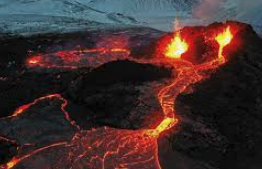
For God’s Sake Don’t Eat It!
To be fair, Iceland isn’t all fire and ice. They produce -and apparently still eat- the single nastiest food that I’ve ever tasted, and I use the term “food” very loosely in this case. It’s rancid, stinking, rubbery, fermented shark meat called hákarl that’s hung for weeks to cure in open barns after first fermenting to generate ammonia. Yes, ammonia. As wikipedia notes dryly “Fermented shark contains a large amount of ammonia and has a strong smell, similar to that of many cleaning products.” Yet they still eat it.
Great brown slabs of it hang from wooden rafters in the open barns, swinging in the breeze like festering corpses hung up on a gibbet. To save yourself a lot of retching and frantic fly swatting never walk down wind from a barn where they’re curing it because you’ll think you’re walking straight into Satan’s arse.
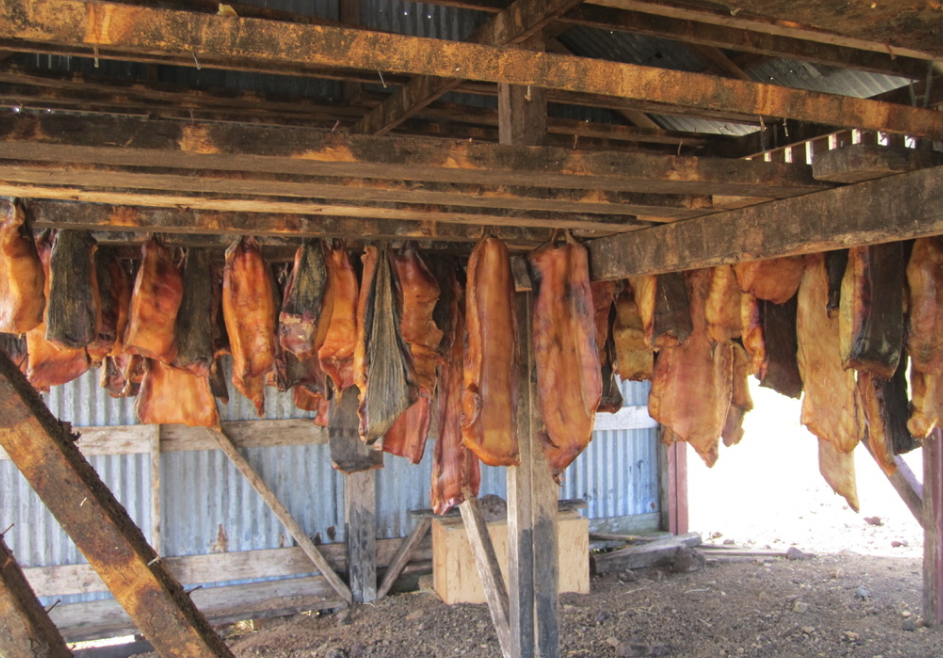
Hákarl is unique -thank God- in being the only national dish which smells like babies’ diapers after they’ve sat in the garbage for a week in a July heat wave. Yes, that bad. The world does not need more of this stuff. To quote one UK TV chef “it’s like chewing a urine-infested mattress.”
But I digress.
I’d wanted to visit Iceland for years; an ambition that was finally fulfilled when I turned 50 last year a few years 8 years back in 2013. My wife enlisted the help of a friendly Icelandic travel agent by e-mail and they arranged a 12-day trip for us and our kids. We rented a car and drove around the west coast to the northern town of Akureyri, where a good friend of mine -Bjarni- lives. After visiting Akureyri, we drove back over the top of the island, between the shrinking ice caps, to Reykjavik.
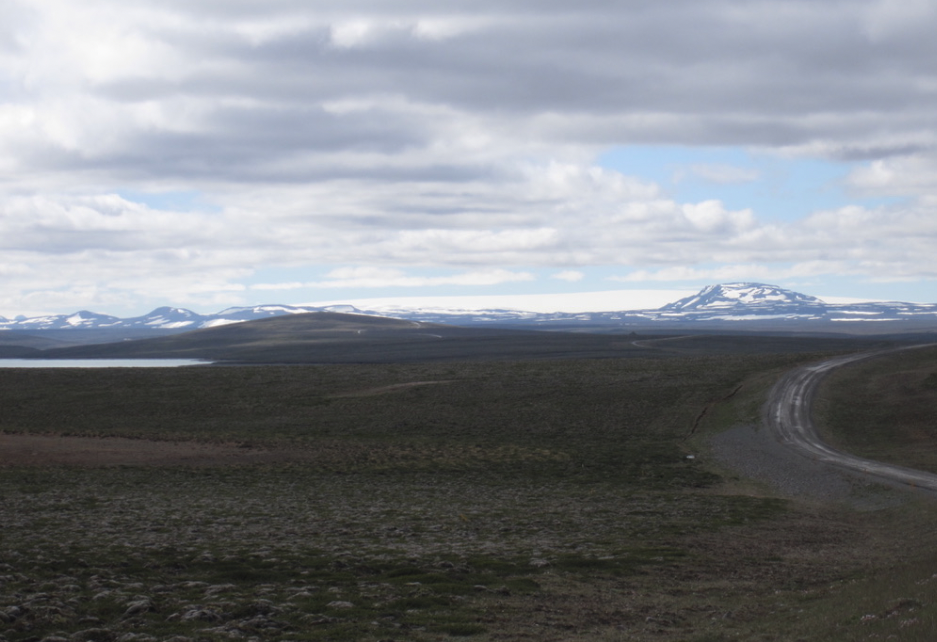
Bjarni is also a geologist – a stable isotope geochemist – trained in the alchemy of oxygen and hydrogen isotopes. He and I went through grad school together in Alberta although he was daft enough to complete a doctorate whereas I sensibly stuck to a Master’s. He wasn’t allowed out of the isotope lab for 4 long, long years, long enough that his kids had forgotten they had a father. The sacrifices geologists make.
Hot Things & Bad Smells
The first thing you realise when you arrive in Iceland is that it has a lot of very hot things like scalding water, burning steam and lava flows. Common sense would tell you that these are the perfect ingredients for generating lots of renewable power. And you’d be right. The country is blessed with the horny wet dream of any wannabe green government; the potenial to generate hundreds of mega-supa-giga-watts of unlimited clean energy.
The UK -which is lacking in hot rocks- is trying to get green and clean by building huge wind turbine capacity. As you fly down over Britain to Heathrow it’s impossible to miss the wind farms on the mountains of Scotland or off the eastern coast. Lucky old Iceland on the other hand taps its geothermal fields to generate power; giant spider webs of silvery pipes criss cross the landscape here and there, connecting steam-producing wells to central generating plants.
If you pay attention as you drive around, you’ll also see failed boreholes and natural steam vents; these are holes or fissures that don’t produce enough steam at the right temperature to establish a viable power plant. They’re usually marked by large cairns of sulphur-crusted boulders, placed over them to stop people scalding themselves as they inhale the hot steam to sluice out the dreadful taste of fermented shark.
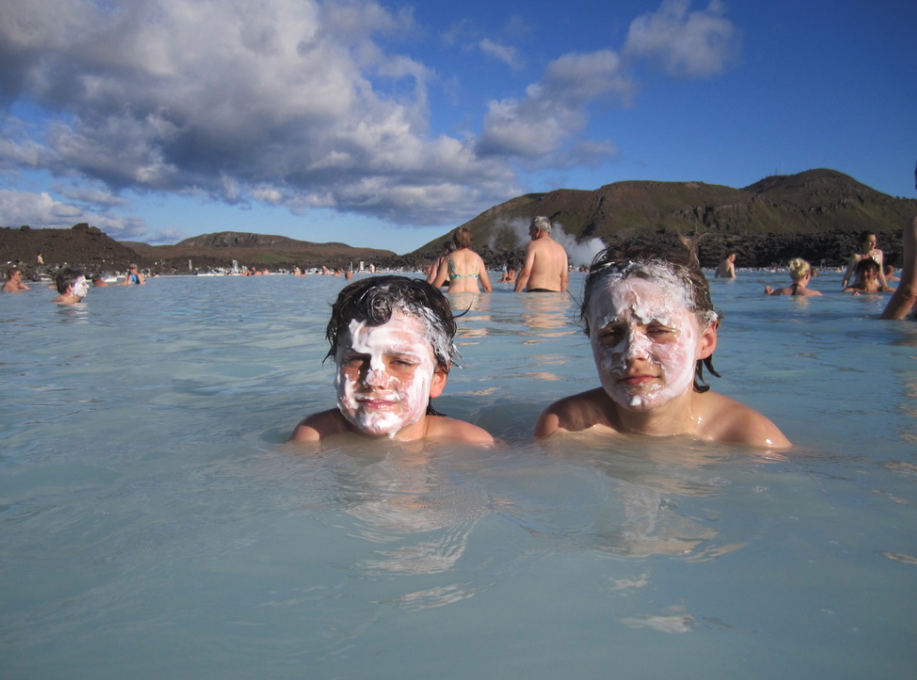
Hot springs are everywhere too. They range from small rock-lined ponds by the side of the road to the swanky modern Blue Lagoon resort near the main airport where you can bob lazily around in the biggest, bluest pool you’ll ever see (it’s actually the cooling pond for a nearby geothermal plant).
Krafla
As we drove around the eggy-scented landscape east of Akureyri, we ended up in a place called Krafla. Krafla is an active geothermal field with 30-odd producing holes generating about 500GWh of power annually from a pair of 35 megawatt turbines. (The US government tells me that a megawatt of capacity equates to about the same amount of electricity consumed by roughly 400 to 900 homes in a year so Krafla can supply the needs of between 30,000 to 60,000 homes.)
Close to the active geothermal field, lurking behind an unassuming-but-serious looking chain link fence, we spotted a large house-sized pile of huge boulders with a massive jet of steam coming out of it. The noise was incredible, like a jet engine and the place stank of sulphur. The four of us got out of the car to hang off the fence, staring slack-jawed at the roaring steam monster that somebody -sensibly- didn’t want us to go near.
On the fence hung a sign. “Icelandic Deep Drilling Program.” (IDDP) sponsored by a bunch of large companies including one multinational aluminum producer. Aluminum smelting needs a lot of cheap power so obviously this had to be some sort of geothermal experiment.
It’s super critical.
That night, I asked my buddy Bjarni about the IDDP. He works for the government geoscience body in northern Iceland, so I figured he’d know if anyone would. Sure enough, under the pale light of the July midnight sun, sipping a glass of something clear and fiery on the back deck with an audience of cute little elves at our feet, he told me the story; a fascinating tale of boreholes, acid steam, powdered glass and royally fucked equipment.
The original intention of the IDDP was to drill down to hot rock below 4,000 metres (13,000 ft) to investigate the potential for tapping 400-600°C supercritical steam for power. Roughly translated, water becomes supercritical when it’s impossible to tell the difference between water and steam. This happens when it’s really hot -over 374°C- and at high pressures over 220 bars or so. Imagine a giant pressure cooker sealed off and doing its thing. Then you suddenly take the pressure seal off and the cooker violently vents hot steam. Loosely speaking, that’s what they were drilling for. Except it didn’t quite work out that way.
The first hole -collared in 2009- was going swimmingly until it got to 2,100m, or about half its planned depth. Then all sorts of things went wrong with the hole, which is hardly surprising as they had drilled into an active and definitely still molten rhyolitic magma chamber. Magma had filled the bottom 10m or so of the bore hole with a solidified glassy rock. The science team modelled the magma chamber -which they assumed had been emplaced in an eruption swarm that hit Krafla between 1974 to 1985- and the numbers suggested that it had to be at least 50m thick to have stayed molten.
The team wrote the adventure up as a science paper outlining the problems thusly:
“In the next 100 m multiple acute drilling problems occurred. The drill bit got stuck twice, was cut loose and the well side-tracked two times before the reason for the drilling difficulties became apparent in June 2009. At 2104 m depth the drill bit penetrated molten rhyolite magma, which flowed into the well. In the third attempt the drillers were prepared and decided not to attempt retrieving the drill string but remained in magma with full circulation ( ∼ 70 L s − 1 of cold water) for some 28 h.”
Heat, Acid & Glass
If you ask me, these are some bad ass drill problems, probably the baddest-assiest ones I’ve ever personally heard about. I thought drilling soft sanded limestones in Iran was bad enough, but we didn’t have Dr Evil’s reservoir of molten rock to deal with. Apparently the only other place that drilling has hit a realio-trulio magma chamber was a geothermal well in Hawaii in 2007.

The engineers and drillers tinkered with the hole, sliding all sorts of equipment down it to allow them to pump down tons of cold water in the hope of controlling the beast. But however much they pumped down, the temperature at the well head -the surface stayed at about 450°C, by far the hottest geothermal well in the world and it was jetting out at a pressure of 145 bars. Which presented some challenges. Interestingly, their calculations also told them that this single hole could produce 35MW IF they could control it. That would make it the single most productive geothermal well in the world.
To make matters worse, the steam condensate – the liquid that formed as the steam vented- had a pH of about 2-2.5, and because it came out of a rhyolite magma chamber, it also contained a lot of dissolved quartz. Anyone who’s studied any hydrothermal geochemistry knows that as a silica-bearing fluid cools or depressurizes, it dumps out the silica as solid glass or some form of crystalline quartz. And IDDP1 didn’t disappoint. As it depressurised, sharp quartz fragments duly appeared wreaking havoc with (aka. destroying) any equipment that was placed around the top of the hole. Think hot battery acid full of broken glass in a pipe and you’ll kinda get the drift.
They did attempt to control the well, connecting up some very impressive machinery on top of it. But once they opened the valve, “the well was eventually shut down after a valve failure occurred while attempting to connect the output to a central generator” The steam gradually went from white to dark grey in colour as it corroded and consumed the equipment. The video link above illustrates quite nicely the before and after. They analysed the composition of the black steam and -in a masterpiece of understatement- reported that it contained traces of the equipment down and around the hole:
“The major metallic cations, Fe (5–100 mg/kg), Cr (0–6 mg/kg), Ni (0–5 mg/kg) and Mn (0.1–0.8 mg/kg) seem to be derived from the well casing and sampling equipment. The gas content is low (about 0.1%) and the gas is apparently not directly emitted from magma.”
Don’t Give Up
The team learned some important lessons from IDDP1 not least of which was what the fuck happens when you accidentally drill into magma. Luckily the outcome wasn’t a mega-eruption that threatens to split the planet in two and bury all of humanity under burning ash unless Bruce Willis steps in and blows something up. Well, at least… not yet…
Undeterred, they drilled another hole, IDDP2 which got to nearly 5km depth, this time without tickling the nuts of a magma chamber. The temperature at the bottom of the hole was/is 427 Celcius “and fluids in supercritical conditions were successfully reached, accomplishing all of the main objectives of the drilling operation.” So that’s nice.
And remember…
If hot, eggy steam turns your crank, you’ve come to the right place. The steam coming from this blog contains traces of dissolved sarcasmium, rantium and humorium isotopes. From time to time I bottle it up and mail it directly to my subscribers so they can inhale deeply in the privacy of their own homes. If you haven’t signed up yet, please do so via the sulphur-encrusted subscription box at the top of this page. You’ll regret it deeply one day whether you do OR you don’t.

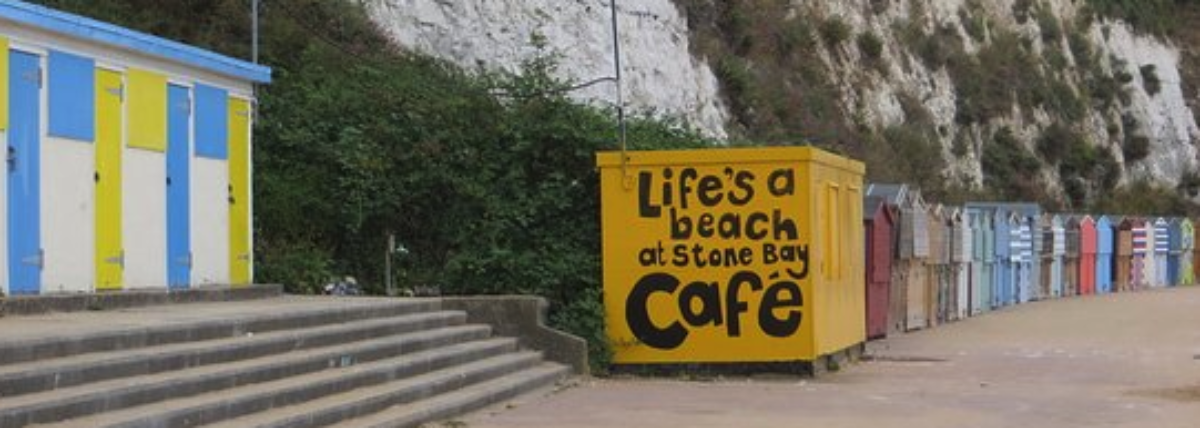
One of your best pieces, informative and amusing.
Another great story. Looking forward to the next one! Thanks.
Extraordinary. So that’s what a black smoker looks like then.
bloody impressive isn’t it? I had a good chuckle at the chaps just strolling around by it.